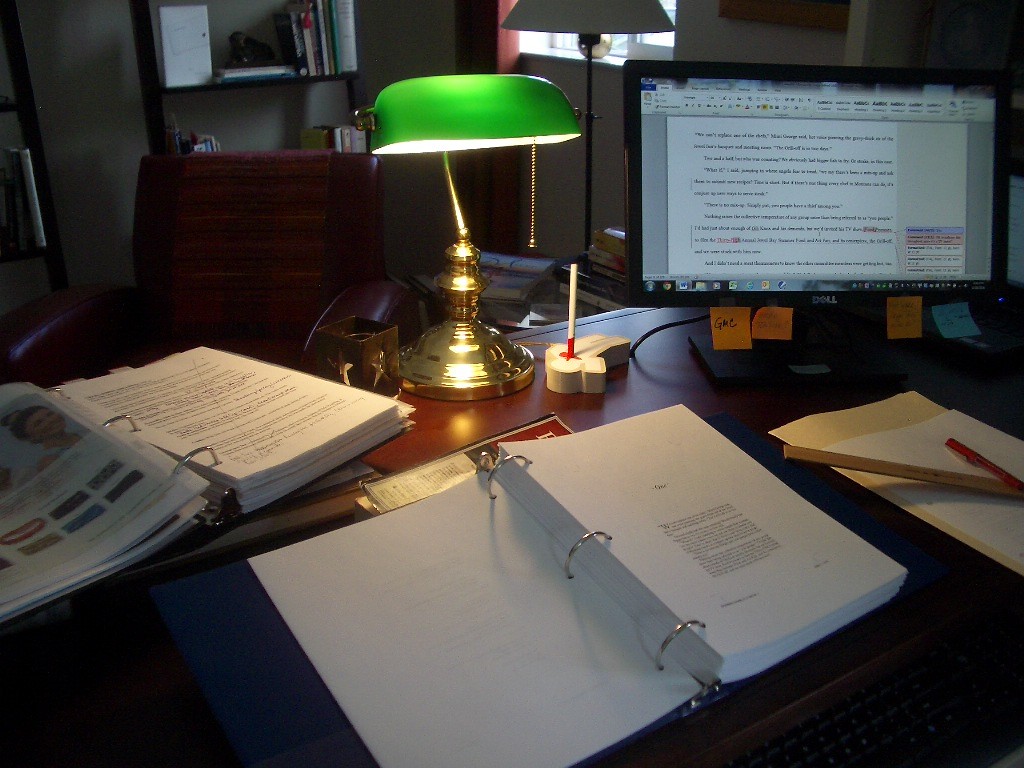A few weeks ago, I gave a presentation to the Mystery Writers of America Northwest Chapter on setting. I love crafting the settings of my stories, and preparing the presentation—a new topic for me—was great fun. The audience was very complimentary and I hope to give the presentation again to other writers’ groups. (Drop me a line if you’re interested.)
But of course, you can’t say everything! And one aspect I didn’t talk about was the language of a locale.
Language and place are highly interconnected. How do your story people talk about the places where your story occurs? Are they intimately familiar with them, or still trying to figure the place out? How does the language of setting relate to the plot or characterization?
Listen to actual usage. Do locals say the highway, the freeway, the Interstate, the toll road, or something else? I-5, 101, the 101? When a character uses the wrong term, does another correct them, mock them, dismiss them? Does your gangster recognize that the newcomer is really new and begin to suspect him?
In my small town, the original townsite, now home to restaurants and retail but few essential services, is always referred to as “the village.” Anywhere else it would probably be downtown. Towns can outgrow geographic references, even though everyone still uses them—I’m thinking of the Northside and the West End in Billings, neither of which is north or west anymore. Neighborhoods can emerge through development or good PR and acquire a name some residents won’t recognize, like the Tangletown area in Seattle that used to just be a corner of Green Lake or a spot north of Wallingford.
What words do locals know that might need an explanation?
My husband and I were driving through farm and ranch country in central Montana. I spotted a compound of long low buildings, some obviously metal farm buildings, others wooden and harder to see.
Me: Is that a colony?
Him: I think so.
Half a mile later, we saw the sign for Miller Colony, Fresh Flowers, Eggs. We knew what we meant, no further details required. But a tourist or newcomer unfamiliar with the area might not know what they were seeing or what we were saying. (A colony is a settlement of Hutterites, a German-speaking Anabaptist community similar to the Amish or Mennonites, located mainly in MT, Alberta, and Saskatchewan. The group lives and farms and ranches communally.)
It’s a craft challenge to convey that insider knowledge. If the details advance plot, setting, or characterization, then try conveying it through context, rather than an info dump, like my parenthetical. If it doesn’t advance at least two of the three elements, you may not need it.
An example:
Her, driving through farm country: Is that a colony?
Him: Must be. (Silence.) Did I ever tell you the story about hustling the Hutterites at Hussmans?
Her: And then one of the guys looked at Brian’s cousin’s girlfriend too long and he went after him with the pool cue?
Him: I always wondered what happened to her. She was way too sweet for him.
Not the best example, maybe, but it shows how language and context can be used to convey both an element of setting and the relationship between this couple. They’ve been together long enough to know each other’s stories, and they feel comfortable skipping the detail and cutting to the punch line. Of course, you’d only include even a short snippet like this if it was relevant to some larger aspect of the story.
How will the language of and about place affect your story?

